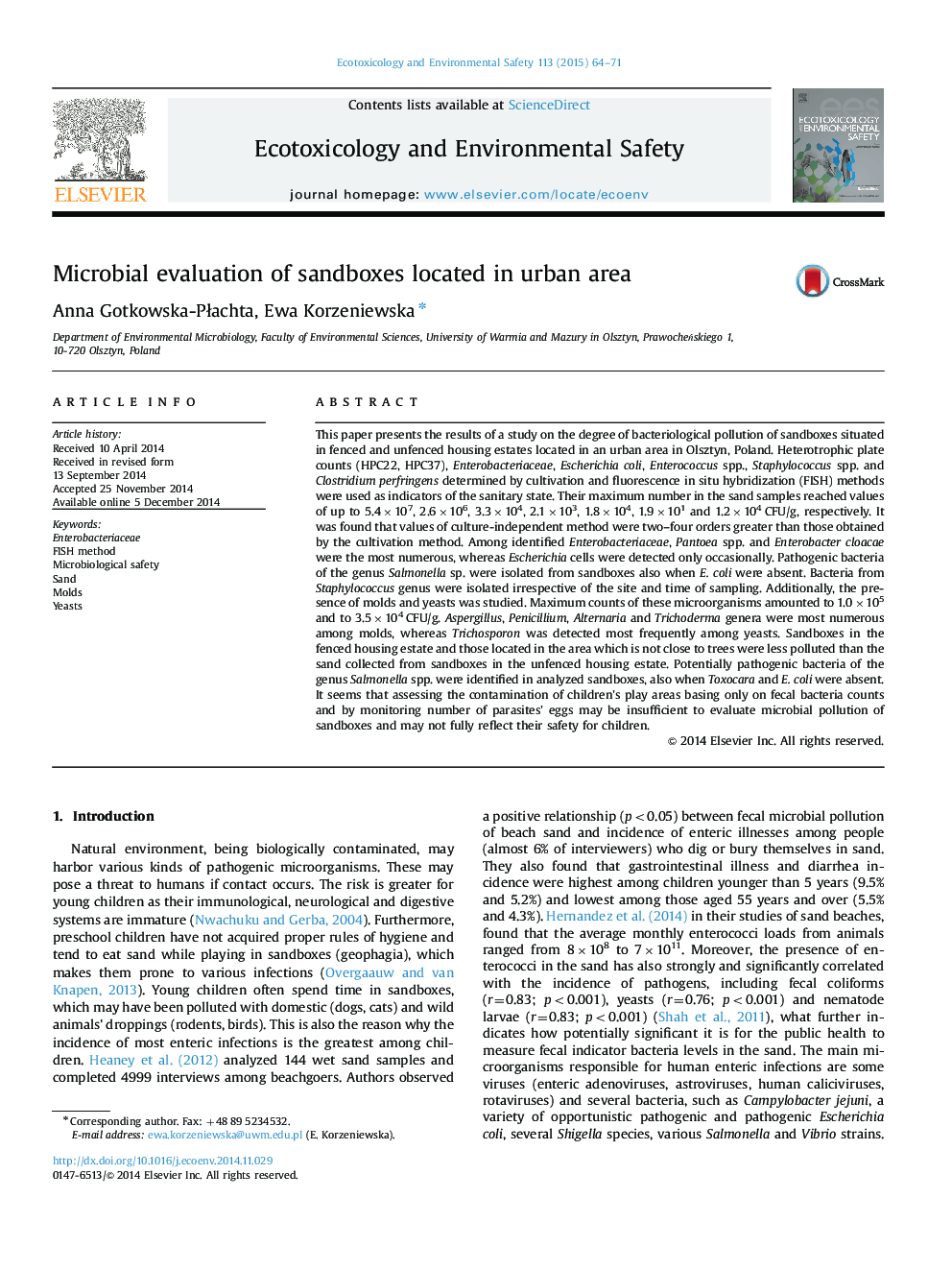| کد مقاله | کد نشریه | سال انتشار | مقاله انگلیسی | نسخه تمام متن |
|---|---|---|---|---|
| 4419706 | 1618950 | 2015 | 8 صفحه PDF | دانلود رایگان |
• Microbiological pollution of sandboxes located in an urban area was investigated.
• Among Enterobacteriaceae, Pantoea spp. and Enterobacter cloacae were most numerous.
• Aspergillus, Penicillum and Trichoderma genera were the most numerous from molds.
• Trichosporon were detected more frequently among the yeasts.
• Higher pollution of sandboxes situated in unfenced housing estate were detected.
This paper presents the results of a study on the degree of bacteriological pollution of sandboxes situated in fenced and unfenced housing estates located in an urban area in Olsztyn, Poland. Heterotrophic plate counts (HPC22, HPC37), Enterobacteriaceae, Escherichia coli, Enterococcus spp., Staphylococcus spp. and Clostridium perfringens determined by cultivation and fluorescence in situ hybridization (FISH) methods were used as indicators of the sanitary state. Their maximum number in the sand samples reached values of up to 5.4×107, 2.6×106, 3.3×104, 2.1×103, 1.8×104, 1.9×101 and 1.2×104 CFU/g, respectively. It was found that values of culture-independent method were two–four orders greater than those obtained by the cultivation method. Among identified Enterobacteriaceae, Pantoea spp. and Enterobacter cloacae were the most numerous, whereas Escherichia cells were detected only occasionally. Pathogenic bacteria of the genus Salmonella sp. were isolated from sandboxes also when E. coli were absent. Bacteria from Staphylococcus genus were isolated irrespective of the site and time of sampling. Additionally, the presence of molds and yeasts was studied. Maximum counts of these microorganisms amounted to 1.0×105 and to 3.5×104 CFU/g. Aspergillus, Penicillium, Alternaria and Trichoderma genera were most numerous among molds, whereas Trichosporon was detected most frequently among yeasts. Sandboxes in the fenced housing estate and those located in the area which is not close to trees were less polluted than the sand collected from sandboxes in the unfenced housing estate. Potentially pathogenic bacteria of the genus Salmonella spp. were identified in analyzed sandboxes, also when Toxocara and E. coli were absent. It seems that assessing the contamination of children's play areas basing only on fecal bacteria counts and by monitoring number of parasites' eggs may be insufficient to evaluate microbial pollution of sandboxes and may not fully reflect their safety for children.
Journal: Ecotoxicology and Environmental Safety - Volume 113, March 2015, Pages 64–71
